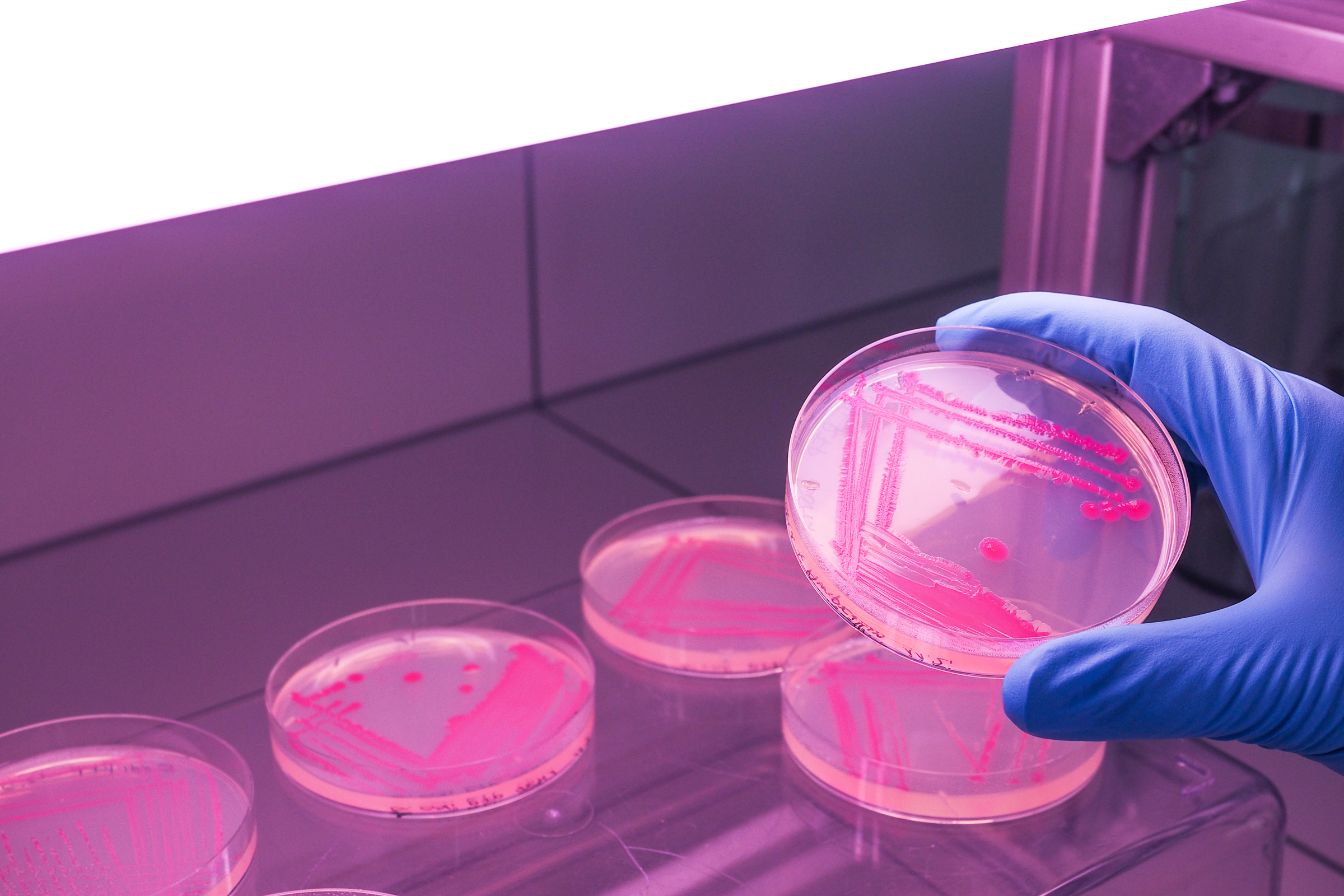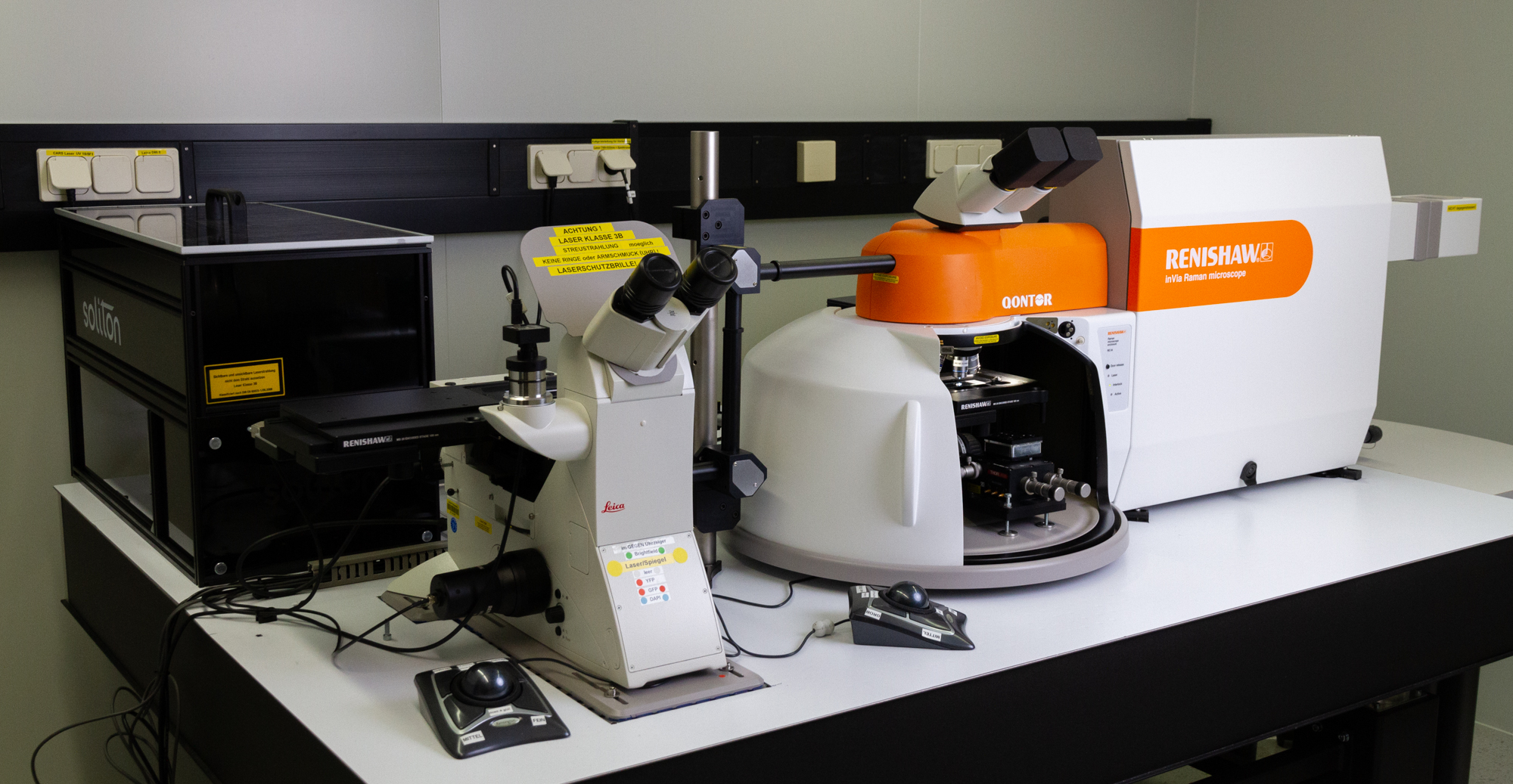Jahr
Year | Titel/Autor:in
Title/Author | Publikationstyp
Publication Type |
|---|
| 2025 |
Molecular Identification of Human and Plant Pathogens in Municipal Domestic Wastewater for Hydroponic System Applications
Kriem, Lukas Simon; King, Neil; Niemann, Sinja; Vainshtein, Yevhen; Sonntag, Mirko |
Zeitschriftenaufsatz
Journal Article
|
| 2025 |
Challenges and requirements of AI-based waste water treatment systems
Dalibard, Antoine; Kriem, Lukas Simon; Beckett, Marc; Scherle, Stephan; Yeh, Yen-Cheng; Schließmann, Ursula |
Zeitschriftenaufsatz
Journal Article
|
| 2024 |
A Low-Tech Approach to Mobilize Nutrients from Organic Residues to Produce Bioponic Stock Solutions
Heintze, Sebastian; Beckett, Marc; Germer, Jörn U.; Kriem, Lukas; Asch, Folkard |
Zeitschriftenaufsatz
Journal Article
|
| 2023 |
Design and Implementation of Energy-Water Nexus Management in a Solar-Powered NFT Hydroponic System
Sidibé, Abdoulaye; Ndeda, Rehema; Murimi Nyamu Wanjiru, Evan; Mutwiwa, Urbanus N.; Kriem, Lukas; Beckett, Marc; Fischer, Peter |
Zeitschriftenaufsatz
Journal Article
|
| 2023 |
Nanocrystalline apatites: Post-immersion acidification and how to avoid it - application to antibacterial bone substitutes
Drouet, Christophe; Vandecandelaère, Nicolas; Burger-Kentischer, Anke; Trick, Iris; Kohl, Christina; Maucher, Tanja; Müller, Michaela; Weber, Franz |
Zeitschriftenaufsatz
Journal Article
|
| 2022 |
Smart mobile vaccination pickup for sustainable improvement of medical care and smart pandemic control in Southern Africa
Stortz, Felix; Went, Joachim; Koschikowski, Joachim; Maruf, Md Nasimul Islam; Schäfer, Lothar; Neumann, Frank; Lotz, Bryan; Beckett, Marc; Hamann, Maike |
Konferenzbeitrag
Conference Paper
|
| 2021 |
Mapping of a Subgingival Dual-Species Biofilm Model Using Confocal Raman Microscopy
Kriem, L.S.; Wright, K.; Ccahuana-Vasquez, R.A.; Rupp, S. |
Zeitschriftenaufsatz
Journal Article
|
| 2020 |
Confocal Raman microscopy to identify bacteria in oral subgingival biofilm models
Kriem, L.S.; Wright, K.; Ccahuana-Vasquez, R.A.; Rupp, S. |
Zeitschriftenaufsatz
Journal Article
|
| 2020 |
Assuring water quality along multi-barrier treatment systems for agricultural water reuse
Mohr, Marius; Dockhorn, Thomas; Drewes, Jörg E.; Karwat, Sybille; Lackner, Susanne; Lotz, Bryan; Nahrstedt, Andreas; Nocker, Andreas; Schramm, Engelbert; Zimmermann, Martin |
Zeitschriftenaufsatz
Journal Article
|
| 2018 |
Teilvorhaben: Automatisierte Biosensoren, selbstlernende Monitoring-Tools und Konzepte für sichere Sensornetzwerke zur Erhöhung der Resilienz von Trinkwasserinfrastrukturen
Bernard, Thomas; Burger-Kentischer, Anke; Frick, Konstantin; Jacubasch, Andreas; Kerger, Christian; Kohl, Christina; Kühnert, Christian; Meier, David; Trick, Iris |
Bericht
Report
|
| 2017 |
Augmented resilience of water distribution systems following severe abnormal events
Piller, O.; Sedehizade, F.; Bernard, Thomas; Braun, M.; Cheifetz, N.; Deuerlein, J.; Wagner, M.; Lapebie, E.; Trick, Iris; Weber, J.-M.; Werey, C. |
Vortrag
Presentation
|
| 2016 |
On-line monitoring of drinking water based on a biological broad-spectrum sensor
Bernard, Thomas; Jacubasch, Andreas; Trick, Iris; Burger-Kentischer, Anke; Kohl, Christina |
Poster
|
| 2015 |
Control of drinking water by linking biosensors with physicochemical methods
Cimalla, Volker; Hugger, Stefan; Fuchs, Frank; Anzt, Johannes; Bitterling, Moritz; Yang, Nianjun; Kohl, Christina; Maucher, Tanja; Mühlemeier, Ilka; Burger-Kentischer, Anke; Trick, Iris |
Zeitschriftenaufsatz
Journal Article
|
| 2015 |
Direct generation of titanium dioxide nanoparticles dispersion under supercritical conditions for photocatalytic active thermoplastic surfaces for microbiological inactivation
Zydziak, Nicolas; Ambrosio Zanin, Maria-Helena; Trick, Iris; Hübner, Christof |
Zeitschriftenaufsatz
Journal Article
|
| 2014 |
Enzyme-functionalized biomimetic apatites: Concept and perspectives in view of innovative medical approaches
Weber, Christina G.; Müller, Michaela; Vandecandelaere, Nicolas; Trick, Iris; Burger-Kentischer, Anke; Maucher, Tanja; Drouet, Christophe |
Zeitschriftenaufsatz
Journal Article
|
| 2012 |
Multicentre trials for decontamination of fine-lumen PTFE tubes loaded with bacterial endospores by low and atmospheric pressure plasma
Schnabel, U.; Maucher, Tanja; Köhnlein, J.; Volkwein, W.; Niquet, R.; Trick, Iris; Stieber, M.; Müller, Michael; Werner, H.P.; Ehlbeck, J.; Oehr, Christian; Weltmann, K.D. |
Zeitschriftenaufsatz
Journal Article
|
| 2012 |
Flexible survival strategies of Pseudomonas aeruginosa in biofilms result in increased fitness compared to Candida albicans
Purschke, F.G.; Hiller, Ekkehard; Trick, Iris; Rupp, S. |
Zeitschriftenaufsatz
Journal Article
|
| 2012 |
Flexible survival strategies of Pseudomonas aeruginosa in biofilms result in increased fitness compared with Candida albicans
Purschke, F.G.; Hiller, Ekkehard; Trick, Iris; Rupp, S. |
Zeitschriftenaufsatz
Journal Article
|
| 2012 |
Vermeidung von Biofilm und Unterdrückung von Virulenzfaktoren pathogener Mikroorganismen an Grenzflächen
Müller, Michaela; Kohl, Christina; Kerger, Christian; Burger-Kentischer, Anke; Trick, Iris; Hirth, Thomas |
Zeitschriftenaufsatz
Journal Article
|
| 2012 |
Strategien gegen Mikroorganismen an Kunststoffoberflächen
Trick, Iris |
Aufsatz in Buch
Book Article
|
| 2011 |
Breitband-Biosensor AquaBioTox zur onlinefähigen Trinkwasserüberwachung
Bernard, Thomas; Müller, Thomas; Jacubasch, Andreas; Schuchert, Tobias; Burger-Kentischer, A.; Maucher, T.; Geiger, Georg-Ullrich; Trick, Iris; Sedehizade, F. |
Konferenzbeitrag
Conference Paper
|
| 2011 |
Assembly of standardized test specimen for microbial quantification of plasma sterilization processes of fine PTFE tubes as used in thermo sensitive medical devices like flexible endoscopes
Maucher, Tanja; Schnabel, U.; Volkwein, W.; Köhnlein, J.; Winter, J.; Weltmann, K.-D.; Trick, Iris; Oehr, Christian |
Zeitschriftenaufsatz
Journal Article
|
| 2011 |
Biofilmvermeidung durch natürliche Wirkstoffe - gezielte und langfristige Freisetzung durch ein PEG-basiertes Depotsystem
Weber, Christina; Burger-Kentischer, Anke; Müller, Michaela; Trick, Iris; Hirth, Thomas |
Zeitschriftenaufsatz
Journal Article
|
| 2010 |
Communication in biofilms between different species: Candida albicans and Pseudomonas aeruginosa
Purschke, F.; Burger-Kentischer, A.; Rupp, S.; Trick, Iris; Hirth, Thomas |
Konferenzbeitrag
Conference Paper
|
| 2009 |
Onlinefähige Trinkwasserüberwachung auf Grundlage eines biologischen Breitbandsensors mit automatischer Bildauswertung (AquaBioTox)
Sedehizade, F.; Trick, Iris; Bernard, T.; Burger-Kentischer, A.; Maucher, T.; Geiger, Georg-Ullrich; Kuntze, H.-B.; Müller, T.; Sawo, F.; Moldaenke, C. |
Konferenzbeitrag
Conference Paper
|
| 2008 |
Clinical tracheal replacement: transplantation, bioprostheses and artificial grafts
Steger, V.; Hampel, M.; Trick, Iris; Müller, Michael; Walles, T. |
Zeitschriftenaufsatz
Journal Article
|
| 2007 |
Physikalisch-chemische und mikrobiologische Wirkung gesputterter photokatalytischer Titanoxid-Schichten
Frach, P.; Glöß, D.; Vergöhl, M.; Hund-Rinke, K.; Trick, Iris |
Zeitschriftenaufsatz
Journal Article
|
| 2007 |
Anaerobe Reinigung von Abwasser
Sternad, W.; Mohr, M.; Spork, C.; Trösch, W.; Trick, I.; Krischke, W. |
Patent
|
| 2006 |
Decomposition ability and bioactivity of photocatalytic TiO2 based layers prepared by reactive pulse magnetron sputtering
Frach, P.; Glöß, D.; Zywitzki, O.; Vergöhl, M.; Neumann, F.; Hund-Rinke, K.; Trick, Iris |
Konferenzbeitrag
Conference Paper
|
| 2003 |
Verfahren zur Erhoehung der Verwendungszeit von Kuehlschmierstoffen
Krueger, K.; Mehlstaeubl, J.; Sternad, W.; Trick, I. |
Patent
|
| 2003 |
Ultrathin antibacterial polyammonium coatings on polymer surfaces
Thome, J.; Holländer, A.; Jaeger, W.; Trick, Iris; Oehr, Christian |
Konferenzbeitrag
Conference Paper
|
| 2001 |
Plasma treatment - an increasing technology for paper restoration?
Vohrer, Uwe; Trick, Iris; Bernhardt, J.; Oehr, Christian; Brunner, H. |
Zeitschriftenaufsatz
Journal Article
|
| 2000 |
Stopp dem Buchzerfall
Koch, B.; Trick, Iris; Vohrer, Uwe |
Zeitschriftenaufsatz
Journal Article
|
| 2000 |
Mikroorganismen. Ursache für die Zerstörung von Archivalien und Büchern
Trick, Iris; Vohrer, Uwe |
Zeitschriftenaufsatz
Journal Article
|
| 1999 |
Bioaerosole - Monitoring mit einem neuartigen Partikelzähler
Schüle, A.; Kölblin, R.; Grimme, R.; Trick, Iris |
Zeitschriftenaufsatz
Journal Article
|
| 1999 |
Entwicklung neuer Sterilisationsverfahren mittels der Plasmatechnik
Vohrer, Uwe; Trick, Iris; Oehr, Christian |
Zeitschriftenaufsatz
Journal Article
|
| 1999 |
Stop dem Buchverfall
Vohrer, Uwe; Trick, Iris |
Zeitschriftenaufsatz
Journal Article
|
| 1999 |
Echtzeit-Differenzierung von luftgetragenen biotischen und abiotischen Partikeln
Schüle, A.; Grimme, R.; Trick, Iris |
Zeitschriftenaufsatz
Journal Article
|
| 1998 |
Detection of Biological Contamination
Grimme, R.; Kölblin, R.; Schüle, A.; Trick, Iris |
Konferenzbeitrag
Conference Paper
|
| 1998 |
Gefahr aus der Luft: On-line-Differenzierung von luftgetragenen biotischen und abiotischen Partikeln
Kölblin, R.; Trick, Iris; Grimme, R. |
Zeitschriftenaufsatz
Journal Article
|
| 1997 |
Optimierung von Dichtsystemen
Schnepple, H.; Reuter, G.; Trick, Iris; Trösch, Walter |
Zeitschriftenaufsatz
Journal Article
|
| 1996 |
Plasmatechnologie in der Restaurierung
Vohrer, Uwe; Anders, M.; Trick, Iris; Oehr, Christian |
Zeitschriftenaufsatz
Journal Article
|
| 1994 |
Entwicklung von Membranen und Membrantechniken nach dem Vorbild der Natur. Vortrag im Rahmen der Informationsveranstaltung der Ministerin für Natur und Umwelt des Landes Schleswig-Holstein am 6.7.1994 in Kiel
Trick, Iris |
Tagungsband
Conference Proceeding
|
| 1991 |
Comparative investigations on the production of glutamic acid with Corynebacterium glutamicum in stirred tank and propeller loop reactors
Reuter, G.; Gebicke, W.; Chmiel, H.; Johl, H.-J.; Sternad, W.; Trick, Iris; Trösch, Walter |
Aufsatz in Buch
Book Article
|
| 1990 |
Characterization of bioreactors with three biological systems
Krischke, W.; Schmid, U.; Wessling, V.; Chmiel, H.; Henkel, H.-J.; Sternad, W.; Trick, Iris; Trösch, Walter; Trück, U. |
Konferenzbeitrag
Conference Paper
|
| 1989 |
Abwasserreinigung mit immobilisierten Mirkoorganismen unter Verwendung von porösen, kugeligen Sinterglasträgern
Henkel, H.-J.; Schneider, W.; Sternad, W.; Trick, Iris; Trösch, Walter |
Konferenzbeitrag
Conference Paper
|
| 1989 |
Immunenzymatischer Test mit Detektion durch Farbumschlag im sichtbaren Spektralbereich
Bryniok, D.; Trick, I.; Trösch, W. |
Patent
|
| 1989 |
Purification of waste waters using microorganisms immobilized of spherical particles of porous sintered glass material
Henkel, H.-J.; Schneider, W.; Sternad, W.; Trick, Iris; Trösch, Walter |
Konferenzbeitrag
Conference Paper
|
| 1987 |
Immunoenzymatic quantitation of methanogenic bacteria in anaerobic mixed cultures
Bryniok, Dieter; Trick, Iris; Trösch, Walter |
Konferenzbeitrag
Conference Paper
|
| 1987 |
Quantitativer immunenzymatischer Nachweis von methanogenen Bakterien in Mischkulturen
Bryniok, Dieter; Trick, Iris; Trösch, Walter |
Konferenzbeitrag
Conference Paper
|
| 1985 |
Aerobic spore-forming bacteria as detrimental infectants in plant tissue cultures
Trick, Iris; Lingens, F. |
Zeitschriftenaufsatz
Journal Article
|
 Fraunhofer Institute for Interfacial Engineering and Biotechnology IGB
Fraunhofer Institute for Interfacial Engineering and Biotechnology IGB

